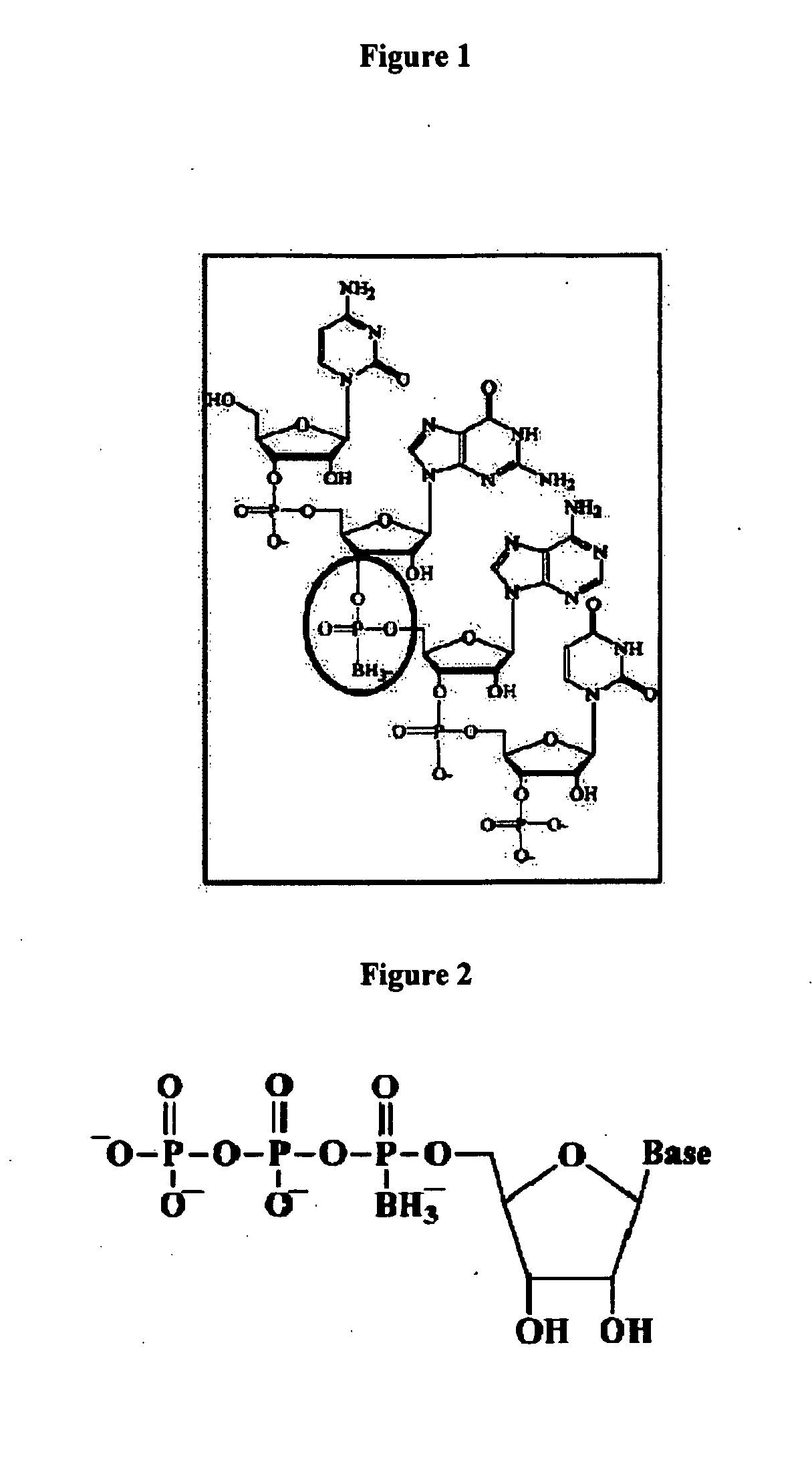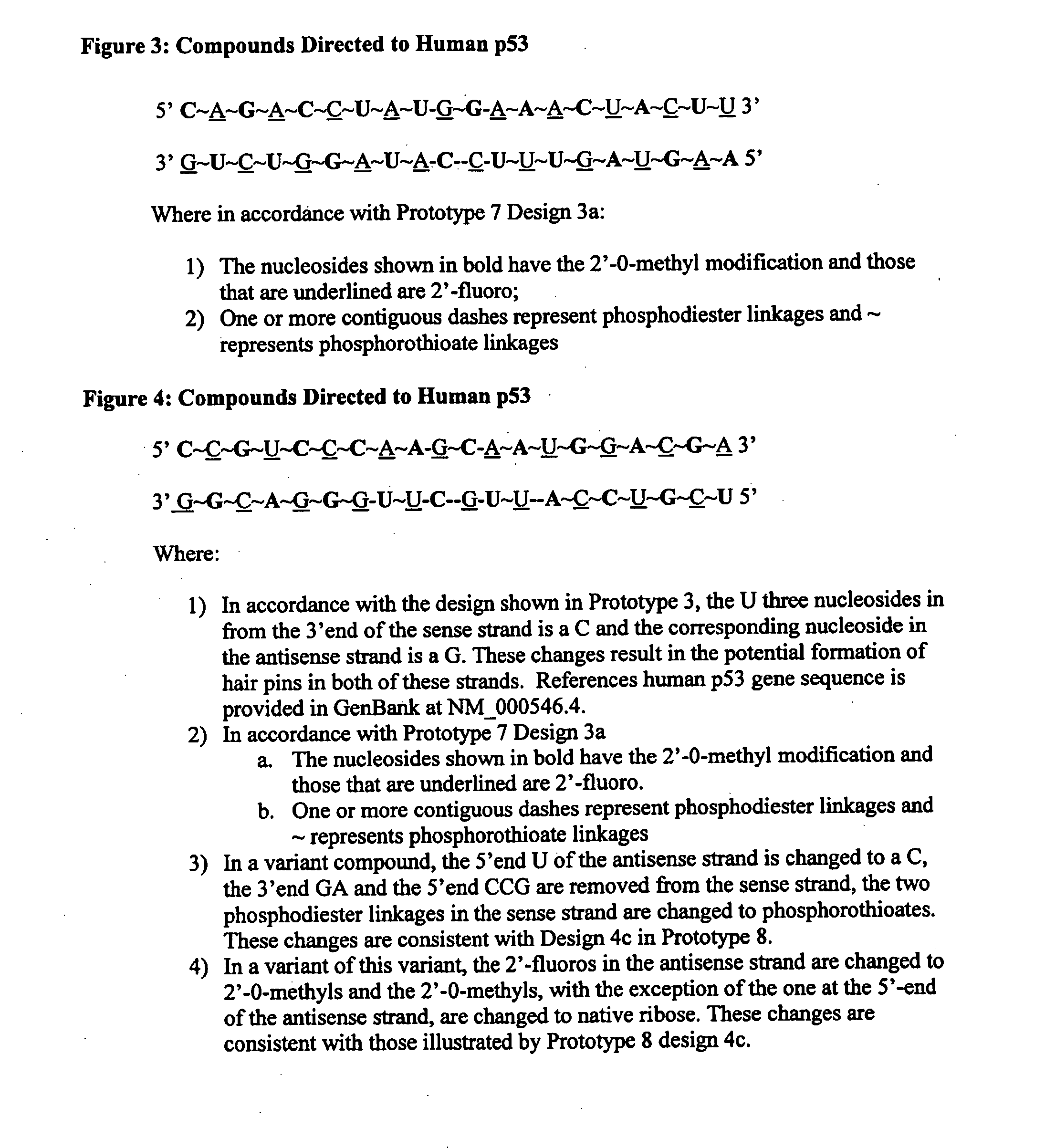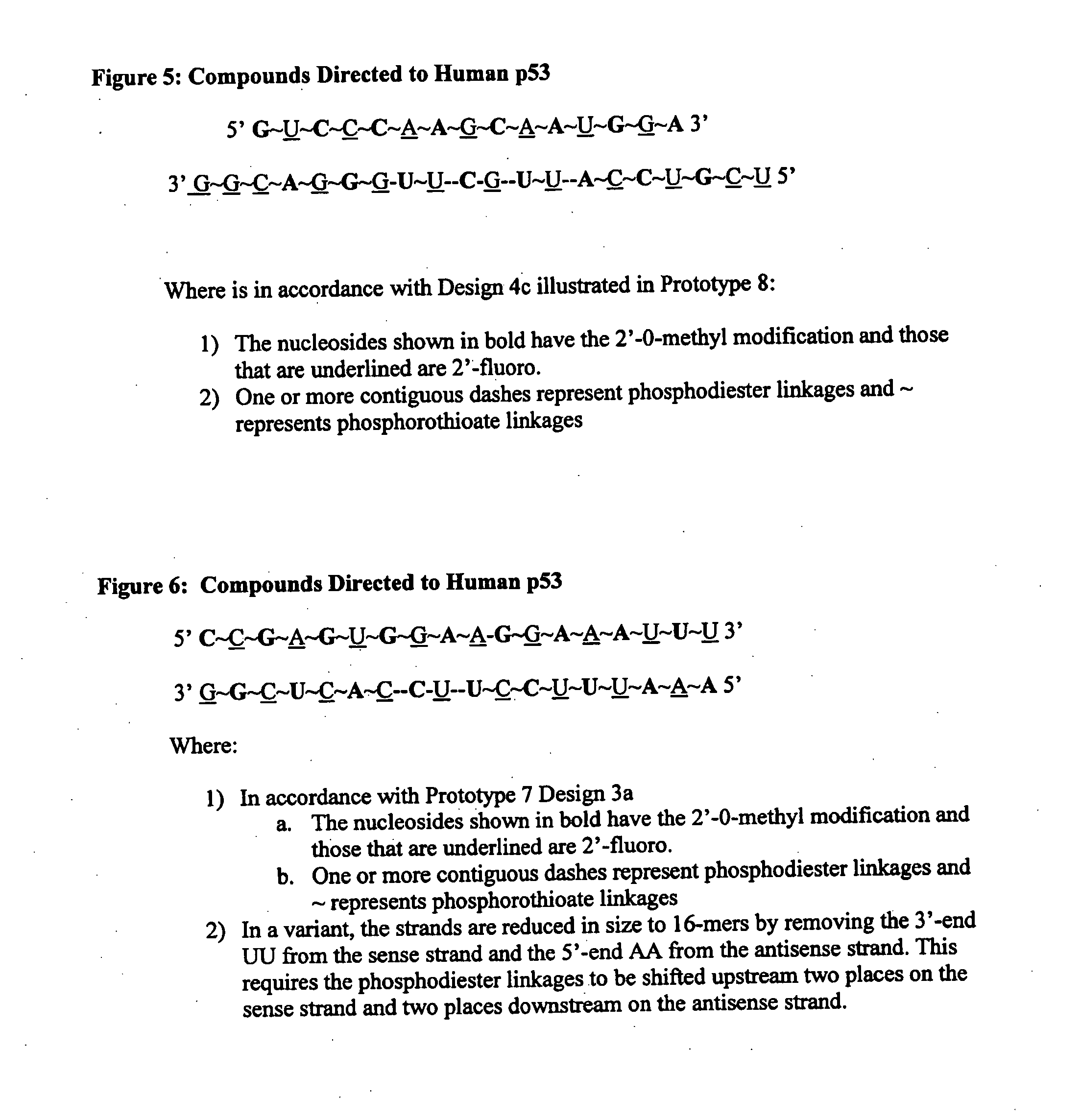Methods and Compositions for Modulating Gene Expression Using Oligonucleotide Based Drugs Administered in vivo or in vitro
a technology of oligonucleotide and gene expression, applied in the field of medicine and gene regulation, can solve the problems of poor uptake of oligos, insufficient potency, and few clinical successes of these molecules to date, and achieve the effect of inhibiting expression and reducing the amount of protein produced by the target gen
- Summary
- Abstract
- Description
- Claims
- Application Information
AI Technical Summary
Benefits of technology
Problems solved by technology
Method used
Image
Examples
example 1
Compounds For Down-Regulating p53 Expression
[0378]p53 is involved in the regulation of a variety of cellular programs including those involving stem cell self-renewal, cellular proliferation and viability such as proliferation, differentiation, apoptosis, senescence, mitotic catastrophe and autophagy. The pathological expression or failure of expression of such programs, and the death programs in particular, underlie many of the morbidities associated with a wide variety of medical conditions where blocking p53 function can prevent much if not all of such morbidity (Table 2).
[0379]In cancer, for example, both wild type and mutant p53 play key roles in tumor maintenance that include increasing the threshold for the induction of programs that can lead to the death of the cancer cells. Typically the use of a p53 inhibitor, such as an siRNA directed to the p53 gene target, in combination with an inducer of a cell death program, such as a DNA damaging agent, can be used to promote the de...
example 2
Compounds For Down-Regulating Fas (APO-1 or CD95) Expression
[0392]Fas (APO-1 or CD95) is a cell surface receptor that controls a pathway leading to cell death via apoptosis. This pathway is involved in a number of medical conditions where blocking fas function can provide a clinical benefit. See Table 2. Fas-mediated apoptosis, for example, is a key contributor to the pathology seen in a broad spectrum of liver diseases where inhibiting hepatocyte death can be life saving.
[0393]Lieberman and her associates have studied the effects of siRNA directed to the murine fas receptor gene target in murine models of fulminant hepatitis and renal ischemia-reperfusion injury (Song et al., Nature Med 9: 347, 2003; Hamar et al., Proc Natl Acad Sci USA 101: 14883, 2004). siRNA delivered by a hydrodynamic transfection method showed that such siRNA protects mice from concanavalin A generated hepatocyte apoptosis as evidenced by a reduction in liver fibrosis or from death associated with injections o...
example 3
Compounds for Down-Regulating APO-B Expression
[0398]Apolipoprotein B (apoB) is an essential protein for the formation of low-density lipoproteins (LDL) and is the ligand for LDL receptor. LDL is responsible for carrying cholesterol to tissues. High levels of apoB can lead to plaques that cause atherosclerosis. Accordingly, blocking apo B expession is a useful treatment modality for a variety of medical disorders including those listed in Table 2.
[0399]Soutschek et al. (Nature 432: 173, 2004) have described two siRNA compounds simultaneously directed to both the murine and human apoB gene targets suitable for use in the present invention (FIGS. 27 and 29). These compounds have 21-mer passenger and 23-mer guide strands with cholesterol conjugated to the 3′-ends of the passenger strand. The cholesterol promoted both nuclease resistance and cellular uptake into the target tissues. The reductions in apoB expression in liver and jejunum were associated with reductions in plasma levels of ...
PUM
| Property | Measurement | Unit |
|---|---|---|
| Tm | aaaaa | aaaaa |
| half life | aaaaa | aaaaa |
| Tm | aaaaa | aaaaa |
Abstract
Description
Claims
Application Information
 Login to View More
Login to View More - R&D Engineer
- R&D Manager
- IP Professional
- Industry Leading Data Capabilities
- Powerful AI technology
- Patent DNA Extraction
Browse by: Latest US Patents, China's latest patents, Technical Efficacy Thesaurus, Application Domain, Technology Topic, Popular Technical Reports.
© 2024 PatSnap. All rights reserved.Legal|Privacy policy|Modern Slavery Act Transparency Statement|Sitemap|About US| Contact US: help@patsnap.com










